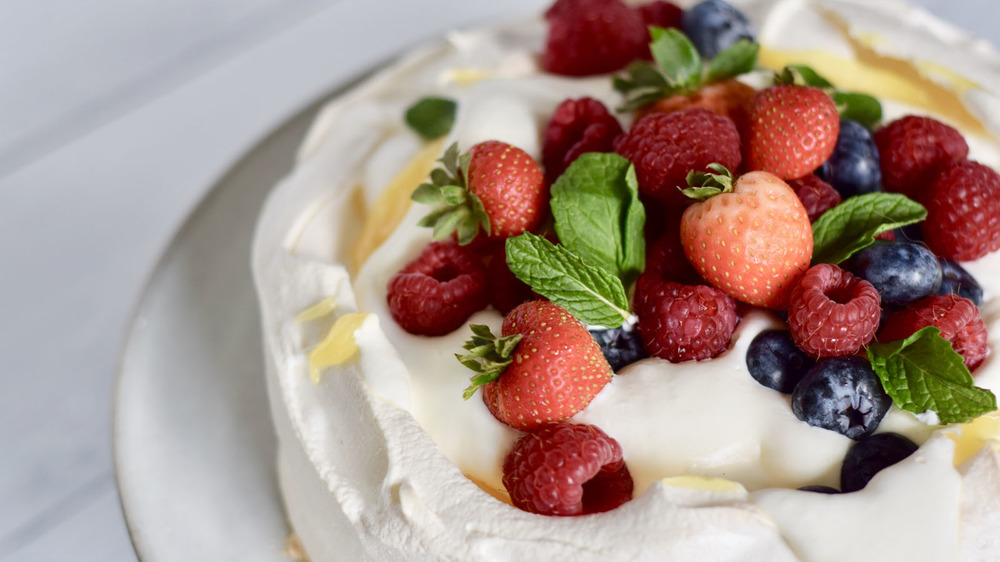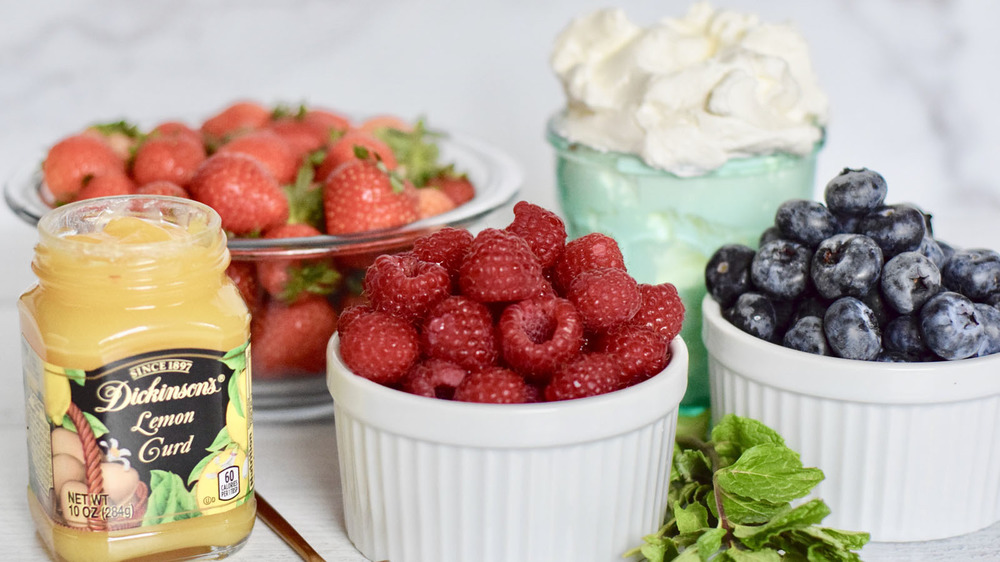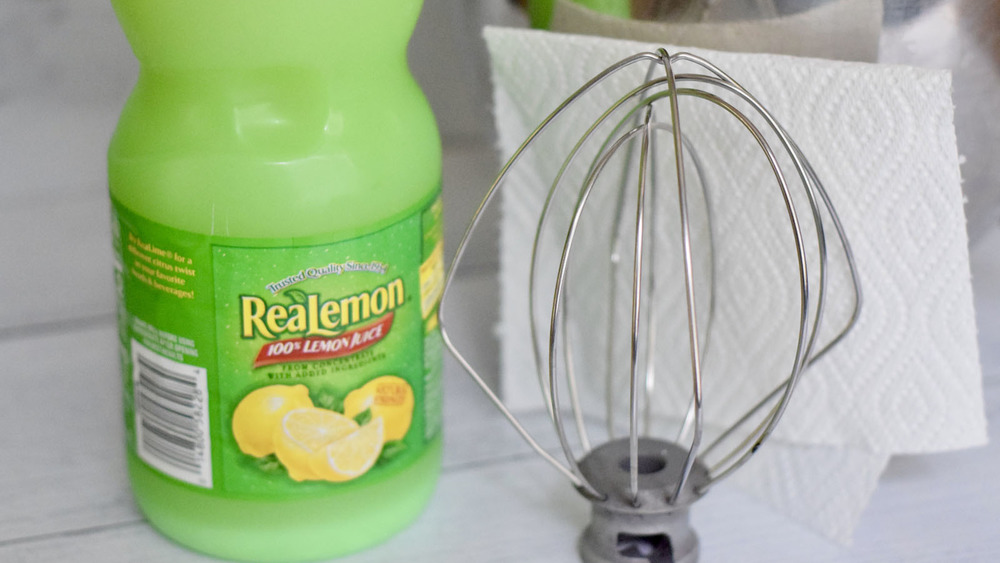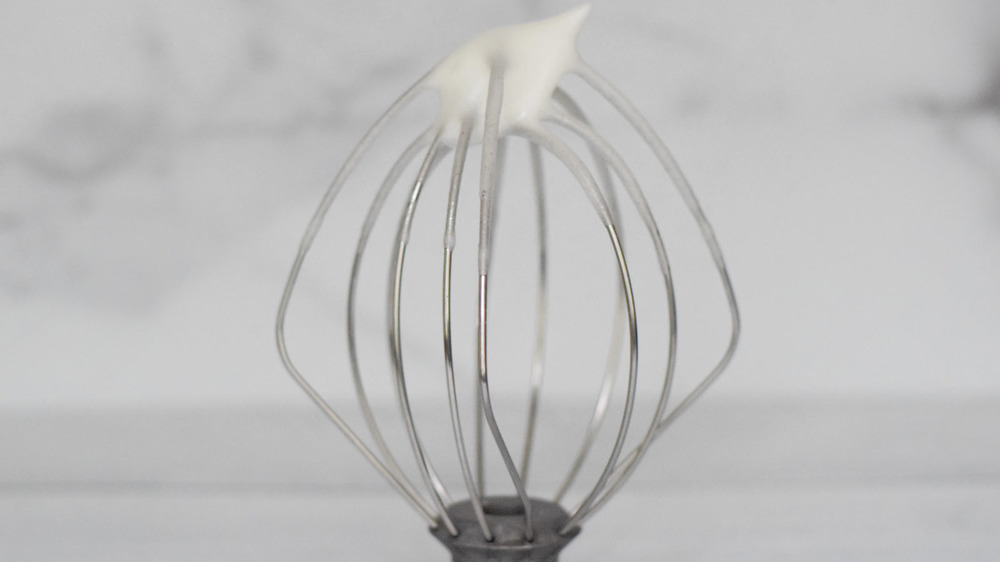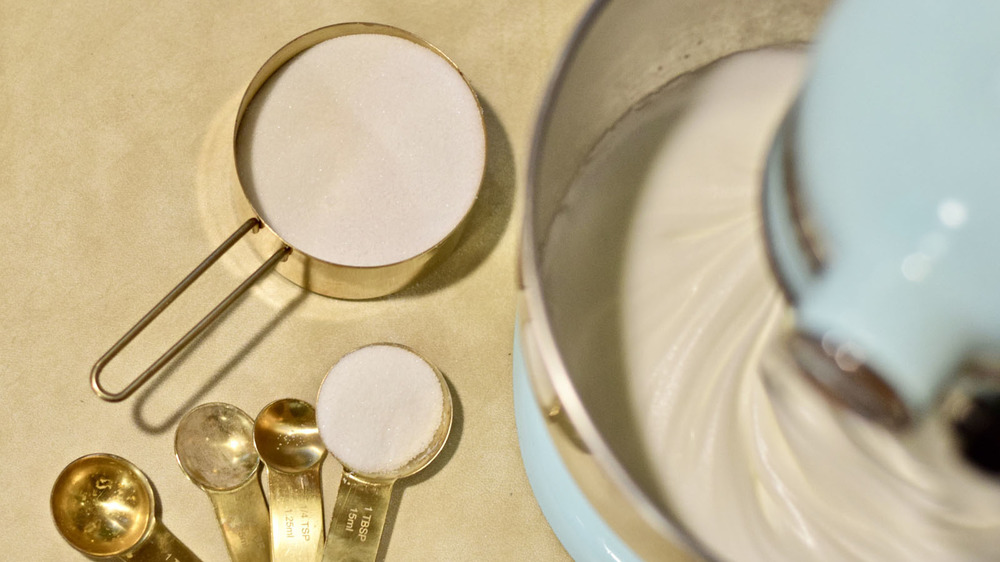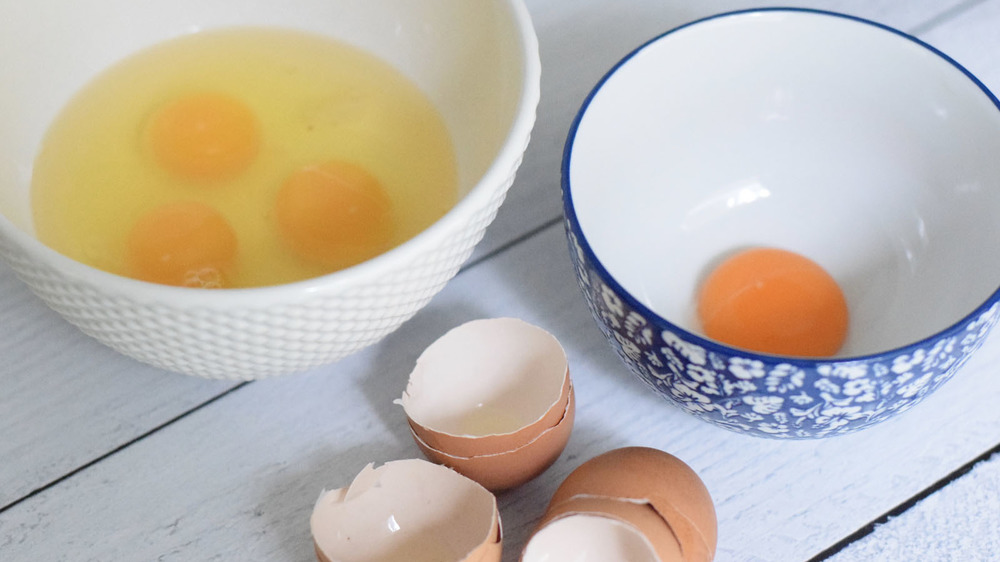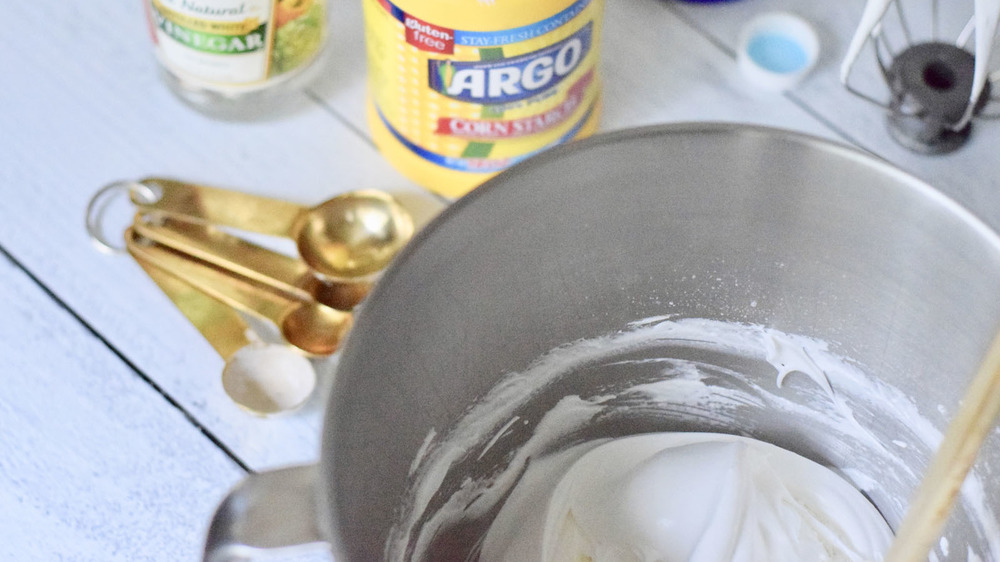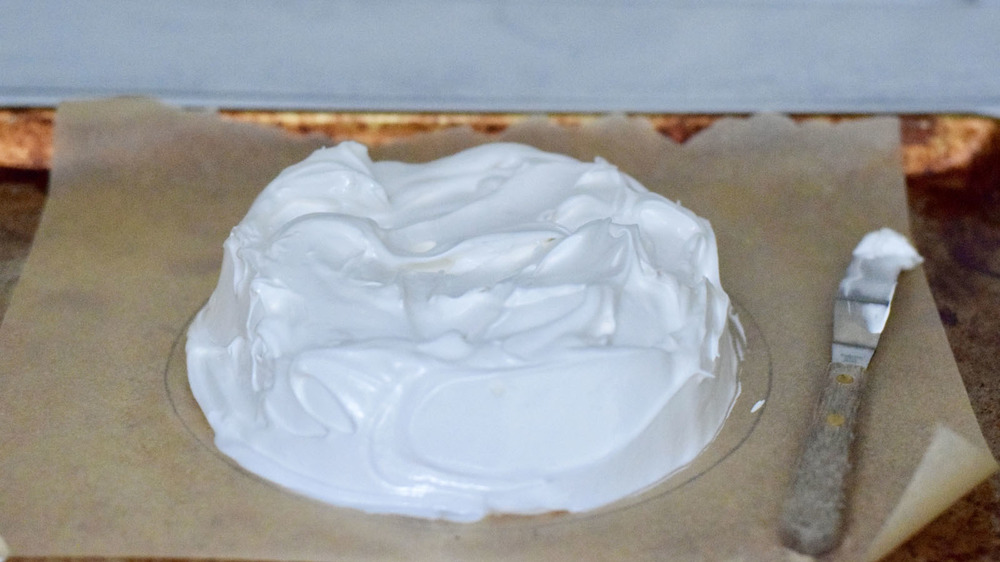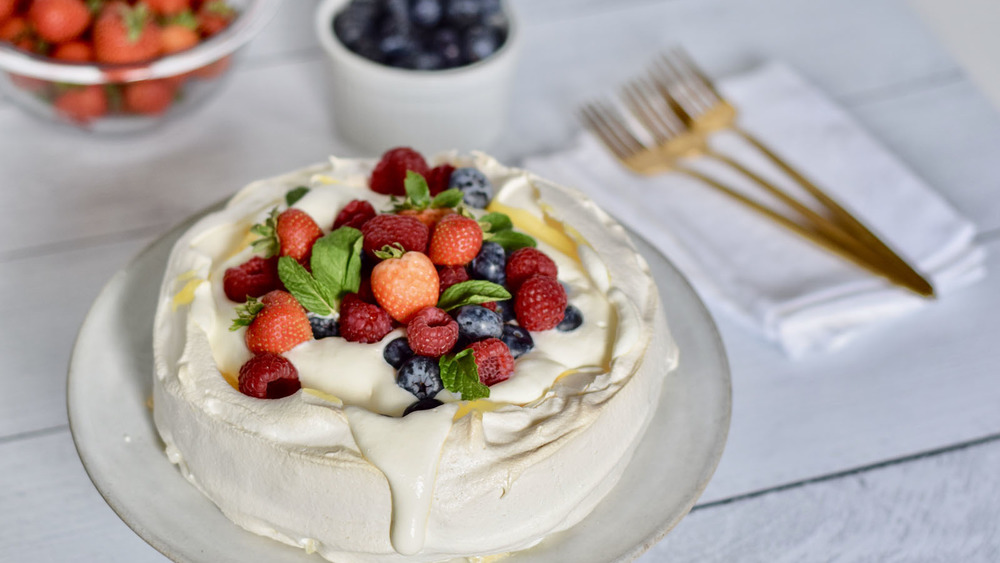Pavlova Recipe
An exceptionally beautiful dessert that tastes fantastic, too, happens to be the source of an ongoing feud between Australians and New Zealanders, each who claim the dessert called pavlova as having roots from their countries. This airy dessert made with a crisp meringue shell topped with whipped cream and fruit likely isn't from either region. According to Food52, the dessert is named after Russian ballerina Anna Pavlova who toured both countries in 1926. New Zealanders claim a chef at a Wellington hotel created the dessert in her honor. But Australians say it was invented at a hotel in Perth and named after her.
But research conducted by a pair hailing from both countries traces the dessert to Germany and the United States. They found more than 150 recipes for this meringue-based cake dating back to before 1926 and the ballerina's tour in the two countries. Regardless, this pavolva recipe from chef and recipe developer Tara Rylie is incredible. The finished product may look intimidating to prepare, but it really isn't. Rylie makes it completely doable and you won't believe the first bite.
Gather up the pavlova ingredients
The beauty behind this elegant dessert is that it takes only 30 minutes to prepare. But it does take two hours to bake and set up through the cooling process, so plan accordingly. The recipe doesn't require many ingredients either, just some patience when working with the four large egg whites. Grab your canister of cream of tartar, granulated sugar, vanilla extract, white distilled vinegar, and cornstarch. You'll need a stand mixer preferably, but in a pinch, a handheld mixer will suffice, especially if it has a balloon whisk attachment, Rylie said. Now let's get to cooking!
Patience makes the perfect pavlova
Beating the eggs into beautiful stiff peaks definitely requires patience, so brace yourself. Start by wiping down the whisk attachment and stand mixer bowl with lemon juice, then let it air dry.
"Egg whites won't whisk if there is fat residue anywhere. The acid in the lemon juice will help remove any unseen residue," Rylie said.
Meanwhile, preheat the oven to 250 degrees Fahrenheit. Trace an eight-inch circle onto parchment paper and place the parchment paper on half of a sheet pan to guide you with the marker side down so it doesn't come into contact with the pavlova mixture. Since you aren't pouring the pavlova mixture into a cake pan or similar structure, it's important to have the circle to guide you.
Mastering the egg white frenzy of pavlova
Affix the whisk attachment to the stand mixer and begin whisking four egg whites with half a teaspoon cream of tartar on medium-low speed until foamy. Once the concoction is foamy, bump up the mixer speed to medium and whip until soft peaks form. Using cold eggs is a common meringue mistake and it's key that the eggs be at room temperature and not straight out of the fridge if possible.
"Room temperature egg whites will not only foam up faster, but they will create a lighter, airier meringue. If you do choose to make a pavlova — or any meringue — on the fly, you can definitely use cold whites. They'll just take longer to whip up and it's very important you don't speed up your mixer to speed up the process," Rylie explained.
Sweeten up the pavlova mixture and make peaks
Slowly add the cup of granulated sugar only one tablespoon at a time, pausing for 20 seconds between sprinkling each tablespoon into the concoction. Once all of the sugar has been added, the egg whites should have reached firm peaks. But if the mixture hasn't yet formed firm peaks, increase the mixer speed to medium-high and whisk longer until firm peaks are reached. Add half a teaspoon of vanilla extract and whisk until just combined.
"Be patient. Increasing the speed will incorporate too much air into whites and may cause cracks when baking. Additionally, the sugar needs time to dissolve. Keeping your mixer at medium speed will allow the sugar to incorporate so you don't have a gritty pavlova," Rylie said.
Helpful hints when working with egg whites for pavlova
Rylie explained that if any egg yolk is present, the whites will not whip into peaks. It may seem tricky to keep the yellow yolks out when cracking eggs, but it's entirely possible you've been making it more difficult than it needs to be and have been separating eggs wrong.
"Crack all of your eggs into a large bowl and then remove the yolks gently by hand," she advised. How do you know when your egg whites have formed stiff peaks specifically?
"Soft peaks means that if you were to stop your mixer, remove your whisk and turn it upside down, the peaks are just starting to hold. They will droop down rather than stick straight up," she said. "To test for firm peaks, remove whisk and turn upside down. Peaks should hold, nearly sticking straight up. Mixture will appear thick and shiny; this is exactly what you want."
Bust out the vinegar and cornstarch
Take the bowl off the stand mixer and drizzle half a teaspoon of white distilled vinegar across the top followed by sprinkling one teaspoon of cornstarch. Gently fold the top into the rest of the meringue mixture with a spatula.
"Distilled white vinegar will not make your pavlova taste like vinegar, I promise. The vinegar helps to stabilize the egg whites and allows them to better hold air," Rylie said. "I know cornstarch seems like an odd addition here but it's what makes a pavlova's center so darn fluffy like a marshmallow."
The cornstarch and vinegar mixed with the cream of tartar doesn't simply just stabilize the egg foam, but keeps the entire mixture solid yet airy.
Shape the pavlova
Dollop the meringue mixture onto the sheet pan and spread it out within the circle you already drew on the parchment paper. Remember to make sure the marker is facing down and away from the meringue mixture. Have fun filling in the circle and scrape the bowl, and don't a single bit behind. Rylie recommended using a small offset spatula to smooth the edges and even create a cool design on the top.
"When it comes to shaping your pavlova, have some fun with it. I like a more rustic look, so I use the offset spatula simply to accentuate some of the natural decorative peaks," Rylie said.
Pop the pavlova into the oven and bake for one hour.
Let the pavlova cool, then garnish
Turn the oven off at the one-hour mark, but leave the pavlova in the oven for another hour or two to cool. Refrain from opening the oven door or it might collapse.
"It is recommended that the Pavlova cool in the oven first before removing. This is important to avoid cracking. If removed too soon and cooled too quickly, the pavlova will crack around the edges and even on top," Rylie said. "When ready, remove from oven and using a large offset spatula, gently move the pavlova to a serving plate. Top with any combination of whipped cream, strawberries, raspberries, blueberries, lemon curd, and mint."
Other toppings Rylie suggested include blackberries, honey, jam, edible flowers, rosemary or powdered sugar.
"Pavlovas are the perfect treat for a special occasion because they just have that 'WOW!' factor. Plus, once you get the hang of a meringue, they're pretty easy. Just keep in mind, once you top your pavlova with jam or curd or whipped cream, you'll need to eat it ASAP. Pavlovas don't store well in refrigerators because the air is too moist and jam/curd/cream don't store well in dry, airtight containers. So once it's decorated, eat your heart out," she said.
Let's head to the kitchen
This light and airy dessert has strong roots in Australia and New Zealand, and when paired with fresh fruit, pavlova is simply stunning.
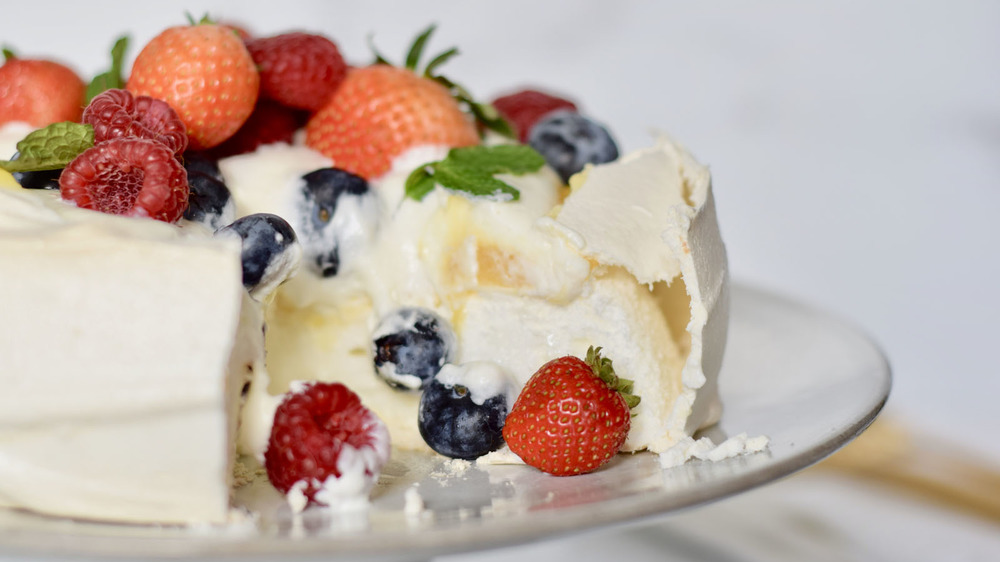
Ingredients
- 4 large egg whites, room temp
- 1/2 teaspoon of cream of tartar
- 1 cup sugar
- 1/2 teaspoon vanilla extract
- 1/2 teaspoon white distilled vinegar
- 1 teaspoon cornstarch
Optional Ingredients
- whipped cream
- strawberries
- raspberries
- blueberries
- lemon curd
- mint
Directions
- Preheat oven to 250 degrees Fahrenheit. Trace an 8-inch circle onto parchment paper and place parchment on half sheet pan, marker side down.
- Wipe down whisk attachment and stand mixer bowl with lemon juice. Let air dry.
- In a stand mixer fitted with whisk attachment, whisk egg whites and cream of tartar on medium-low speed until foamy. Once foamy, increase speed to medium and whip until soft peaks form.
- Gradually add sugar 1 tablespoon at a time, waiting around 20 seconds between each addition. Once all sugar is added, whites should have reached firm peaks. If not at firm peaks yet, increase mixer speed to medium-high and whisk until firm peaks are reached.
- Add vanilla extract and whisk until just combined.
- Remove bowl from stand mixer and sprinkle vinegar and cornstarch over top. Gently fold into meringue mixture with spatula.
- Dollop meringue mixture onto sheet pan and spread out to fill up pre-drawn circle. Use a small offset spatula to smooth edges and create a design on top.
- Bake 1 hour immediately after preparing. Turn off the oven when 1 hour has passed but leave pavlova in the oven. Try not to open the door here either. Let cool in oven for 1 to 2 hours before removing.
- When ready, remove from the oven and, using a large offset spatula, gently move the pavlova to serving plate. Top with any combination of whipped cream, strawberries, raspberries, blueberries, lemon curd, and mint.
